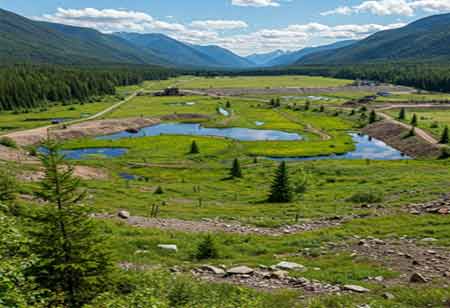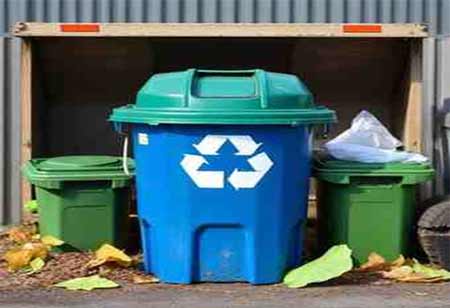Thank you for Subscribing to Environmental Business Review Weekly Brief
The Bioremediation Evolution: Strategies for Tackling Contamination in Canada

By
Environmental Business Review | Thursday, November 27, 2025
Stay ahead of the industry with exclusive feature stories on the top companies, expert insights and the latest news delivered straight to your inbox. Subscribe today.
Once a niche practice tied closely to academic research and government-driven projects, bioremediation has matured into a full-fledged industry redefining how environmental recovery is pursued across diverse ecosystems. The companies setting new standards are not just responding to contamination—they’re anticipating it, adapting rapidly, and reimagining what restoration means in a modern context.
At the center of this movement lies an evolving toolkit powered by biology, precision monitoring, and systems thinking. In a country where industrial legacies span mining, energy, agriculture, and urban expansion, the bioremediation sector has been compelled to evolve from reactive cleanup to strategic foresight. From rugged extraction zones in remote regions to neglected parcels in dense cityscapes, today’s remediation efforts are calibrated with intention, accountability, and innovation at every phase.
These companies are no longer isolated service providers but environmental problem-solvers integrating with regulatory agencies, urban planners, Indigenous communities, and ecosystem specialists. Bioremediation in this landscape isn’t just about reversing damage—it’s about future-proofing land use, aligning with climate adaptation, and demonstrating that industry and ecology can harmoniously operate when innovation leads the way.
Trends Reshaping the Bio-Remediation Sector
The Canadian bioremediation sector is transforming, marked by the adoption of hybridized, multi-technology strategies. Traditional microbial applications are increasingly combined with electrokinetic assistance, controlled nutrient delivery, and smart sensor arrays that track bioavailability in real-time. This integration allows remediation systems to penetrate deeper and adapt more precisely to the complex conditions of each site, significantly improving efficiency and responsiveness.
Plant-based remediation methods are also experiencing a strategic revival. Long valued for their low environmental footprint, these approaches are refined with microbial enhancements that work synergistically with root systems. This new wave of phytoremediation is better suited to ecologically sensitive or hard-to-reach locations, offering a sustainable alternative that minimizes mechanical disruption while expanding the range of applicable sites.
At the same time, synthetic biology is enabling progress in treating stubborn contaminants that were once beyond the scope of bioremediation. Genetically tuned microorganisms are being developed with precise metabolic pathways designed to degrade specific compounds while minimizing unintended environmental effects. In parallel, data-driven tools such as remote sensing, machine learning, and cloud-based monitoring platforms transform how remediation projects are managed. These technologies provide continuous insight into soil, water, and microbial dynamics, allowing companies to shift from reactive cleanup efforts to proactive, adaptive strategies that anticipate environmental changes.
Facing Industry Challenges with Strategy and Resilience
Innovation in bioremediation has not evolved in isolation. The sector contends with complex site conditions, evolving regulations, and heightened public expectations. Contaminated sites from years of industrial activity create a big challenge in Canada. These sites contain mixed contaminants that can interact in dangerous ways. These locations require highly customized, multidisciplinary approaches to navigate microbial diversity and chemical unpredictability. Tailored strategies are essential to safely and effectively manage such heterogeneous environments.
Climate variability is compounding these difficulties. Rising groundwater tables, frequent freeze-thaw cycles, and unpredictable weather events threaten the long-term stability of remediation sites. In response, forward-thinking companies are embedding climate resilience into their project designs. This includes integrating buffer zones, adaptive treatment systems, and contingency plans that can adjust to ecological fluctuations, thereby preserving the effectiveness of biological interventions under changing conditions.
Time frame remains a persistent obstacle. Bioremediation’s inherently gradual process contrasts sharply with stakeholders’ desire for rapid results. This has spurred innovation in enhancing microbial metabolism and developing biostimulants that safely accelerate degradation. Access and equity are equally pressing. Many of the most affected sites lie within historically marginalized communities. Leading firms now prioritize inclusive engagement strategies that blend Indigenous knowledge, local consultation, and workforce development to deliver socially grounded and enduring remediation outcomes.
Opportunities Driving the Next Phase of Growth
Bioremediation is rapidly emerging as a cornerstone of sustainable environmental management, driven by rising demand for low-carbon, circular solutions. Its ability to restore ecosystems without introducing secondary pollutants makes it a preferred choice for industries and communities seeking responsible remediation. The sector is witnessing a surge in scalable, adaptable treatment systems catering to small and large sites. Modular platforms—engineered for rapid deployment, real-time calibration, and easy relocation—are reshaping site restoration’s economic and environmental calculus.
This shift is opening doors to innovative business models, notably remediation-as-a-service. By bundling consultation, implementation, and monitoring into long-term agreements, companies promote a shift from one-time interventions to continuous environmental care. These models align provider incentives with landowner goals, fostering lasting partnerships and ensuring healthier sites over time. Simultaneously, digital tools enable real-time diagnostics, performance tracking, and data-driven decision-making, enhancing transparency and efficiency.
Innovation in the sector is accelerating by applying advanced tools like bioinformatics, gene editing, and molecular diagnostics—technologies now being tested in Canadian field pilots. With growing government support and evolving regulatory frameworks, bioremediation is transitioning from a niche solution to a standard practice, positioning itself at the forefront of a greener, more resilient future.





